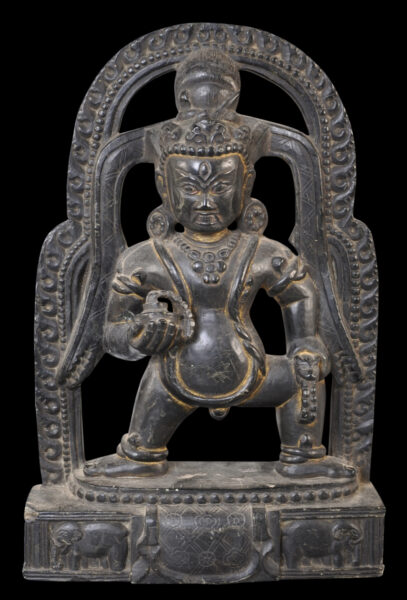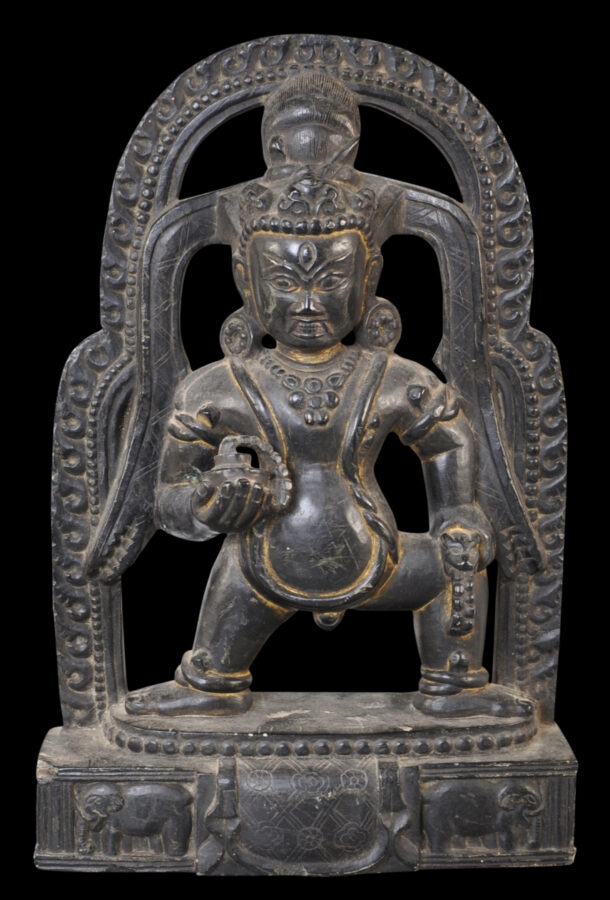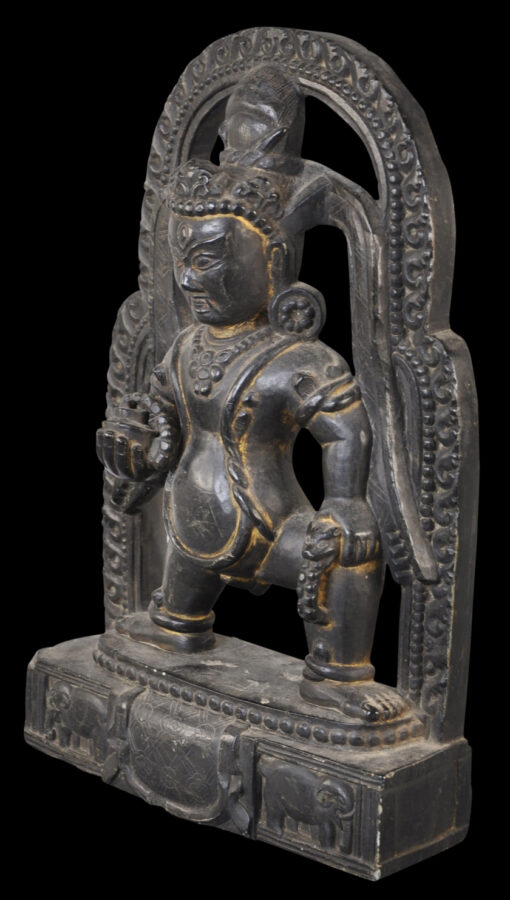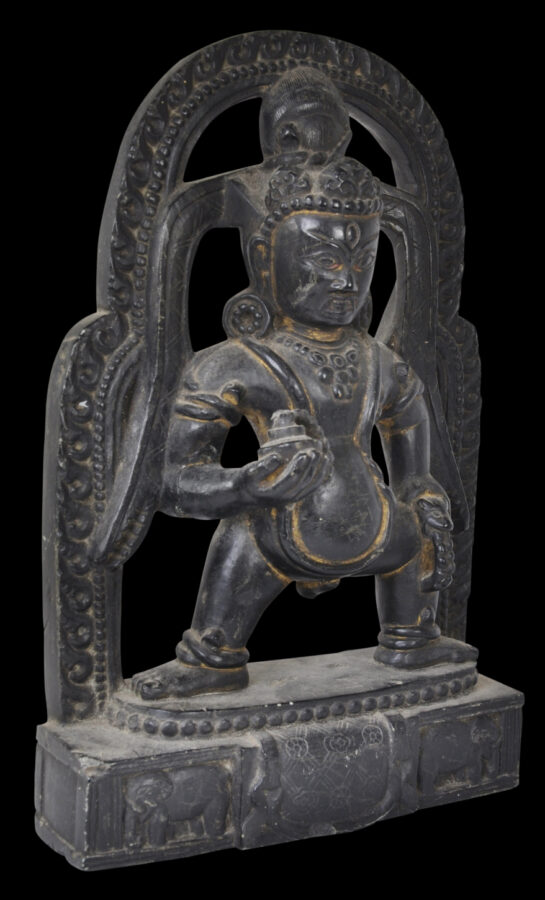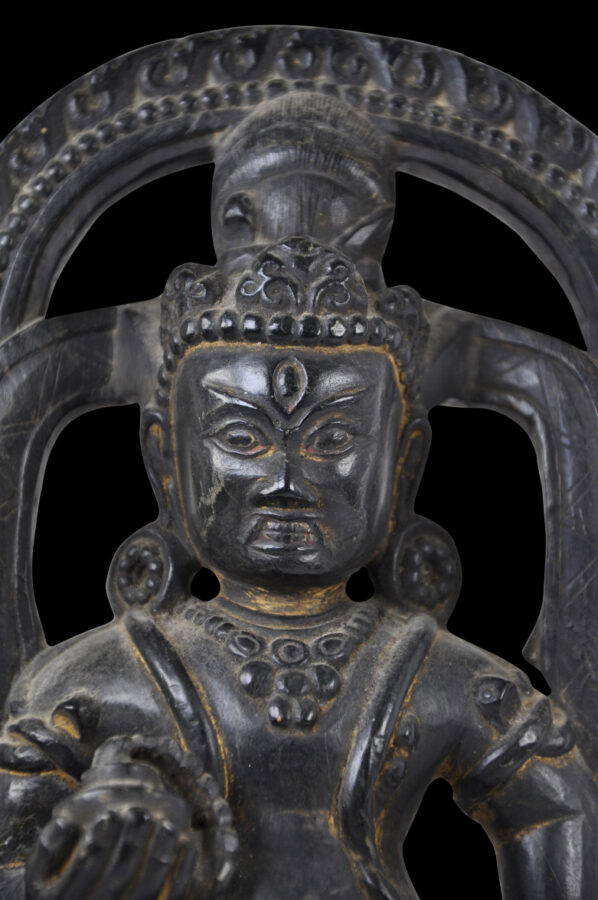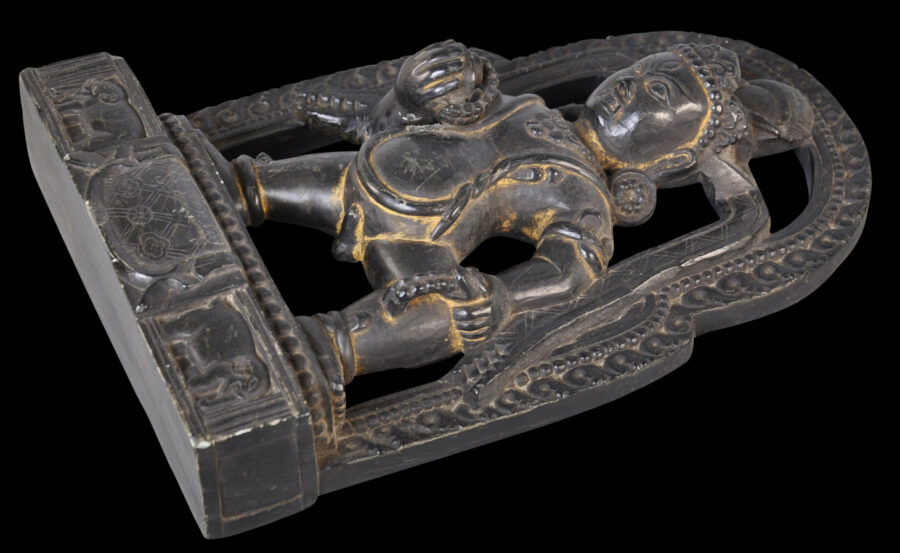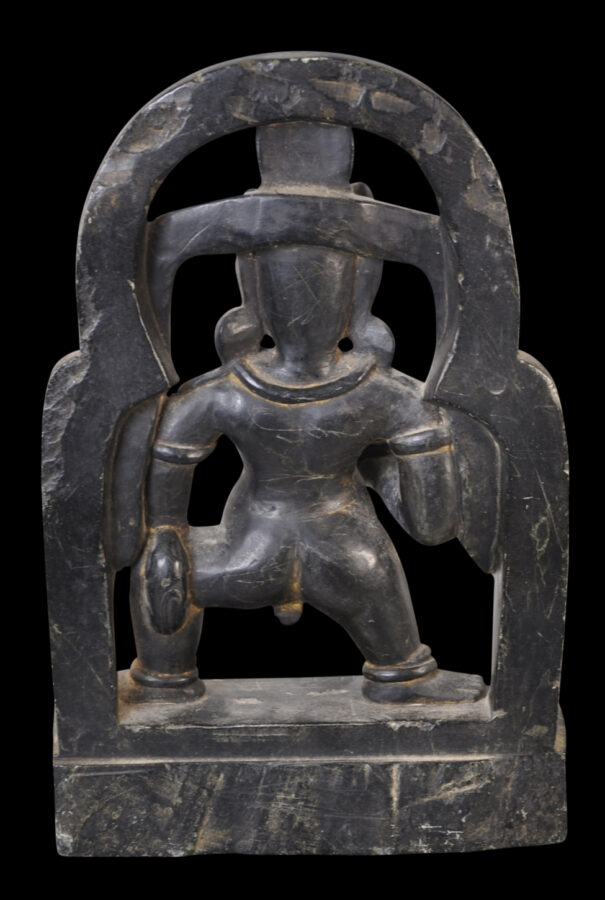This image of the Black Jambhala, based on the Indian god of wealth, Kubera, is carved from dark schist stone and was most probably intended to fill a niche in a wall, probably near a doorway. (Buildings in the Kathmandu Valley usually are made from hand-made clay bricks. Niches are filled with statues carved from sandstone or schist, as well as wood and copper.)
Originally, the figure of the Jambhala was entirely gilded but this has largely worn away over the years.
Jambhala is popular in Nepal and Tibet, as a wealth deity. In Tibetan Buddhism, there are five Jambhalas – the white, red, green, yellow and black Jambahals – each a manifestation of the compassion of the Buddha and the Bodhisattvas and intended to guide sentient beings along the path to enlightenment. They aspire to help the poor and those suffering from ill-fortune.
The image here stands naked in a wrathful posture, dwarf-like and sexually aroused. He has three eyes, a foliate crown, massive ear ornaments, and a naga or snake draped around his shoulders and reaching to his pot belly. Other snakes serve as arm bands, anklets, and a tie around his high hair chignon.
The figure holds a mongoose (nakula) on his left knee with his left hand. The mongoose is vomiting jewels which it has seized from its serpent guardian on behalf of the human world. In the right hand, Jambhala holds a scull cup from which jewels also are spewing.
The deity stands within an arched, flaming aureole or nimbus on a platform carved with two elephants.
The image is in fine condition. The right arm has an old break/repair but this is not readily evident. It retains traces of gilding – it is likely that the deity itself was completely gilded but that the nimbus was not. There also traces of red sindoor or puja powder or cinnabar around the eyes.
References
Hutt, M., Nepal: A Guide to the Art & Architecture of the Kathmandu Valley, Adroit Publishers, 2010.
Proser, A., (ed.), Pilgrimage and Buddhist Art, Asia Society Museum/Yale University Press, 2010.


